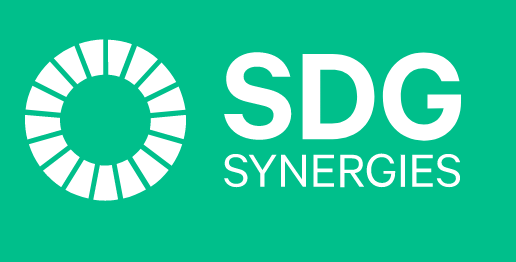SDG Synergies Tool

This tool is part of the SEI Urban Toolbox for Liveable Cities which has been developed by the SEI Initiative on City Health and Wellbeing. The Urban Toolbox is a collection of tools, developed within SEI or in coordination with SEI, aimed at supporting planning and decision-making for improving the health, well-being and resilience of city residents and urban systems more broadly.
About this tool
SDG Synergies helps you record, visualize and analyse how multiple targets are likely to interact in a given context. In doing so, it reveals deep patterns and relationships that would not be seen by simply looking at interactions between pairs of targets.
How does this tool work?
Based on a participatory, discussion-based scoring process, SDG Synergies develops a cross-impact matrix of interactions between all the targets being considered: how progress on one might affect progress on the other, and vice versa. With intuitive controls it is then possible to regroup and rank these interactions to explore different aspects of the system.
Using advanced network analysis and visualization capabilities, SDG Synergies can surface more complex relationships, such as how the effects of one interaction could ripple through the larger system.
The visualizations and analyses can, for example, inform decisions about how to prioritize or sequence implementation of different targets, or how best to manage potential trade-offs between them. They can also help to identify what cross-sectoral collaborations would be most productive.
Who might use this tool?
SDG Synergies is invaluable for anyone who needs to make strategic decisions that involve multiple interacting targets and interests. To date it has been used by national and regional governments around the world, universities and more. The tool could equally add value in the private and non-profit sectors.
Which stakeholders are involved?
Governments, urban planners, service providers (public and private sector)
What stage of the process does this tool support?
This tool can be adapted to be used at different stages of an assessment:
- defining the assessment
- generating ideas
- developing solutions
- implementation
- monitoring
- evaluation
Tool overview
Every application of SDG Synergies is different, tailored to the context, the targets, and the resources available. But typical SDG Synergies processes feature three stages:
Design
The design stage sets the overall parameters for the process: how will it be done, which targets will be examined, who will be involved. This is also when to decide what expert input is needed to support the interaction scoring stage.
Interaction scoring
Interaction scoring can be done by experts or – especially when the aim is policy setting – by larger groups representing different sectors and stakeholder groups, usually in a workshop. This way, SDG Synergies uniquely combines scientific evidence with participants’ subjective experience and contextual knowledge, so the results reflect the limitations and opportunities of the context in which the policies will be implemented.
In this stage, interactions between pairs of targets are scored on a seven-point scale, reflecting the degree to which they potentially support or hinder each other, and these scores are entered into the SDG Synergies too. The rationales behind the scores are also recorded in the tool to support later discussions and verification.
Analysis
The analysis stage involves network analysis to identify policy-relevant patterns in the interactions, and discussion about their implications for policy.
Application: SDG Synergies case study examples
- Using SDG Synergies to build capacity in Mongolia: this study used SDG Synergies to help build capacity in the Mongolian government for more integrated policymaking.
- Using SDG Synergies in the Mapping Interactions between SDG Targets project in Sri Lanka: this study focuses on a two-day workshop that discussed and scored interactions between SDG Targets.
- Using SDG Synergies to explore how environmental targets interact with other Sustainable Development Goals at EU level: this study was carried out to identify and characterize critical interactions among the SDG targets that could be particularly relevant to environmental policy-makers in the European Union.
- Using SDG Synergies to prioritize development strategies in Colombia: this study focuses on two workshops that explored which environmental themed Sustainable Development Goals should be prioritised in development strategies.
- Using SDG Synergies to improve coherence between policy agendas in Colombia: in this study the application of SDG Synergies focused on 61 targets that were selected from across the three agendas, chosen according to their relevance for Colombia’s mining-energy sector.
- Using SDG Synergies to helpuniversity students to better understand systems thinking: in this study of a series of five workshops at EAFIT University, Medellín, SDG Synergies helped students to identify interactions between topics that they had previously thought were unrelated.
Capabilities and resources required
To use SDG Synergies, a user needs a computer or smartphone with internet access. The tool is available in English and Spanish, and the user manual is available in English.
Implementation tips: key enablers and potential barriers
As a reliable internet connection is required for the tool to be used, this could also be a potential barrier.
In addition, the tool is only available in English and Spanish, with the user manual only available in English, so this could be a barrier to using the tool.
Potential integration with other tools
This tool could be integrated or used along side other urban planning tools to record, visualize and analyse how multiple targets are likely to interact in a given context.
(0) Comments
There is no content